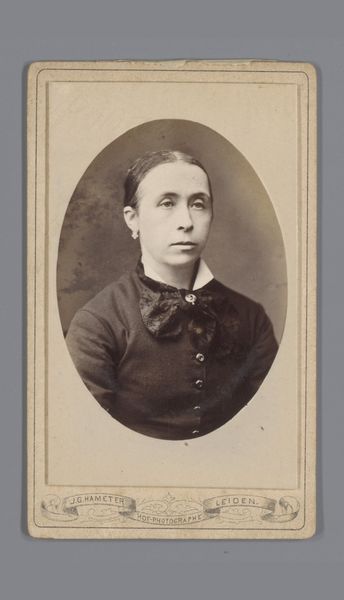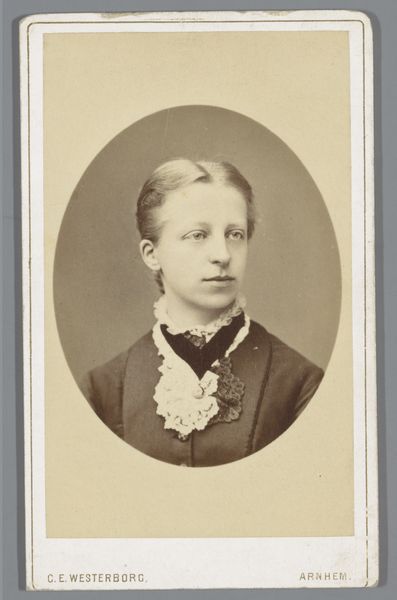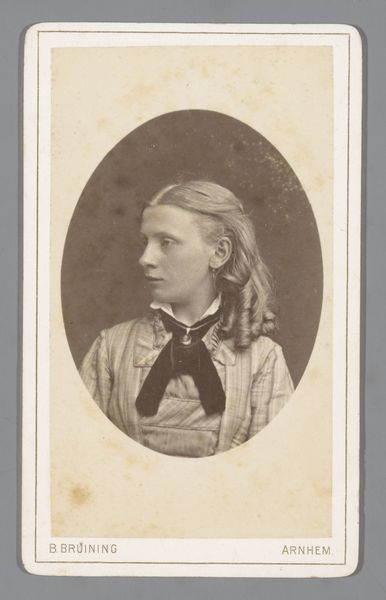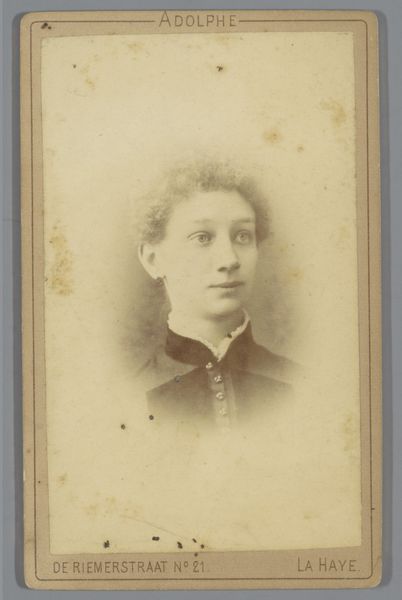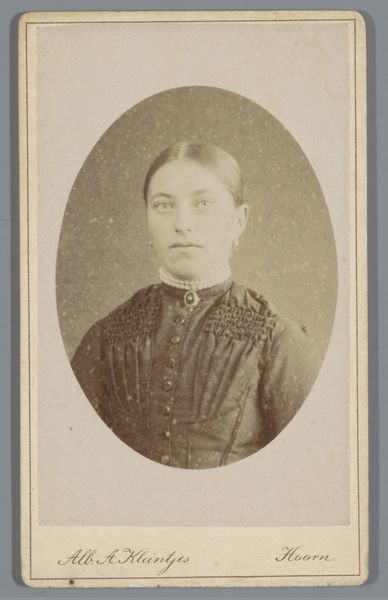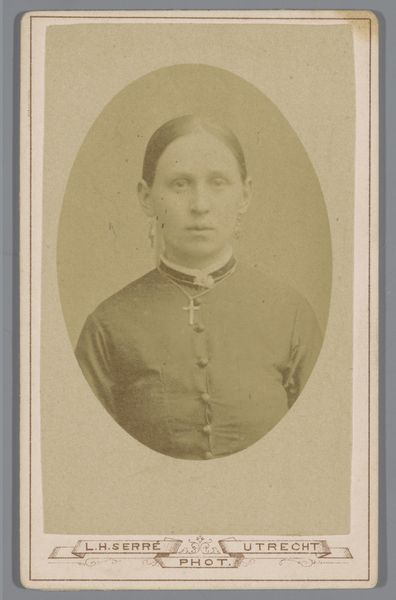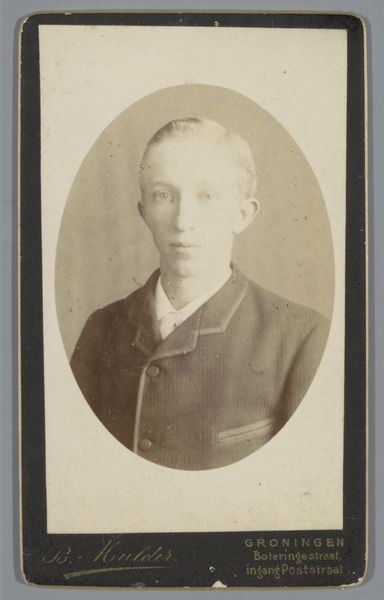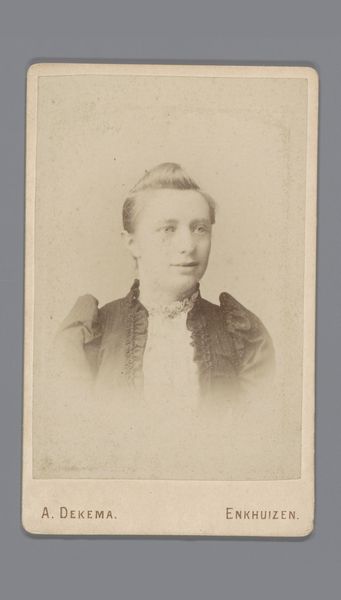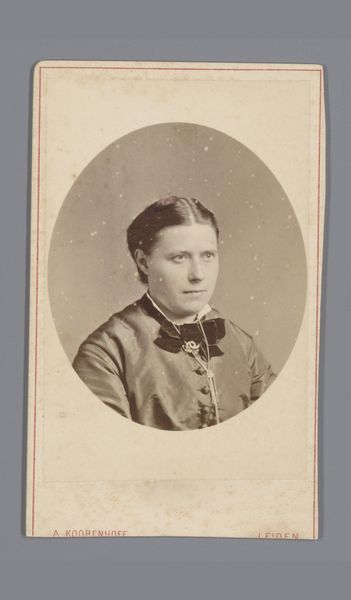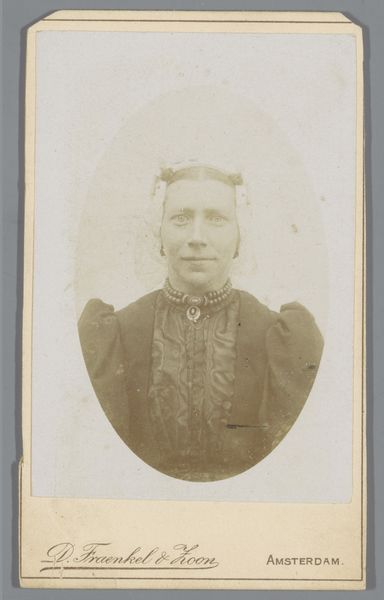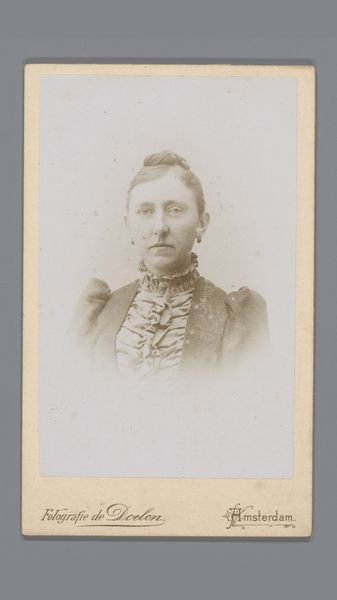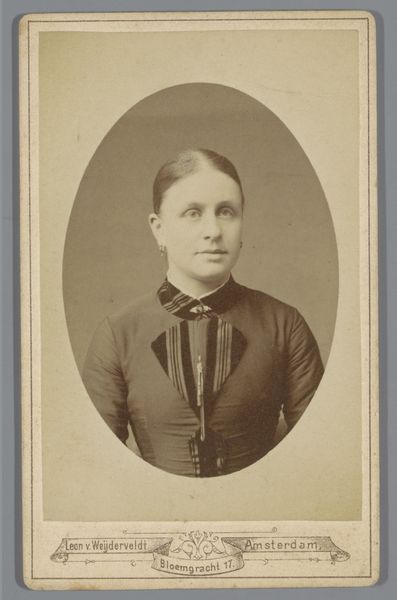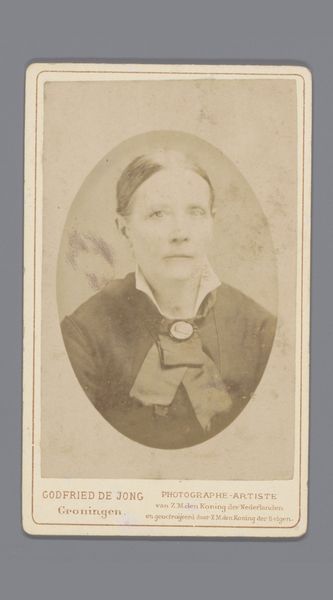
photography, gelatin-silver-print
#
portrait
#
16_19th-century
#
photography
#
historical photography
#
gelatin-silver-print
#
19th century
#
fine art portrait
Dimensions: height 101 mm, width 62 mm
Copyright: Rijks Museum: Open Domain
Editor: This is an arresting portrait, simply titled "Portrait of an Unknown Woman," dating from around 1862 to 1899. It’s a gelatin-silver print, currently residing at the Rijksmuseum. The photographic technique and the woman’s clothing strike me as quite somber and reserved. What aspects stand out to you in terms of materials and process? Curator: I'm drawn to consider the very production of this image. Think of the gelatin-silver process itself—the labor involved, the specific chemicals, and the paper quality of the time. These weren’t simply images; they were carefully constructed objects, requiring both artistic skill and technical expertise. Consider, too, how access to photographic technology at this time might have been limited. Editor: So, you’re saying the materials used contribute meaning to the portrait? Curator: Absolutely. The materials speak to a specific moment in industrial and social history. A portrait like this was a commodity, and an indicator of status. Was it a democratizing force making portraiture more accessible or did the labor and materials involved reinforce existing class divisions? And consider the dissemination: how many prints were made? Who consumed them and in what contexts? Editor: That’s fascinating. I hadn't considered it as a kind of mass-produced object with a socioeconomic context. Curator: Exactly. Look at the woman's dress and jewelry – those also represent material realities. Are these modest adornments or statements of relative wealth? Does her gaze convey dignity or resignation within the social constraints she faced? These material considerations can really reshape how we view the subject. Editor: I see. So, the photograph’s significance isn’t just aesthetic, but also linked to the means of its production and the social conditions of the time. It changes the way I perceive the entire image. Curator: Precisely. It’s about examining how labor, materiality, and consumption are all intertwined in the creation and reception of this "Portrait of an Unknown Woman". Editor: I'll definitely think differently about portraits from now on. Thanks for pointing that out!
Comments
No comments
Be the first to comment and join the conversation on the ultimate creative platform.
